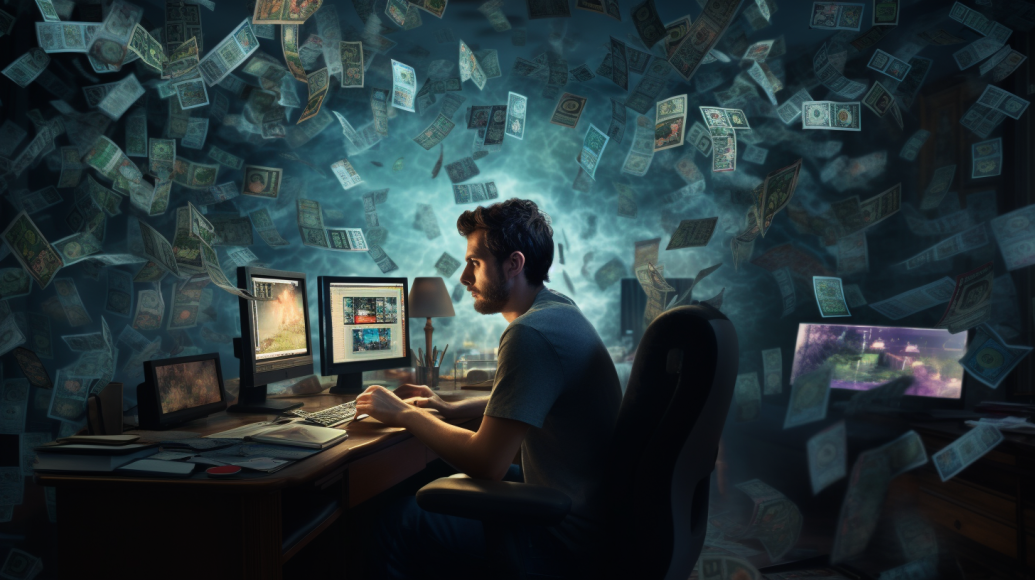Smart VFX budgeting: A guide to cost-efficient strategies for filmmakers
Navigating the world of film production, visual effects (VFX) stand as a cornerstone, weaving magic into cinematic narratives. But, how does one balance artistic ambitions with budget constraints?


This guide aims to illuminate the path, offering insights into budgeting, the creative process, and the roles pivotal in turning cinematic visions into breathtaking realities. We will explore the strategies to optimize costs, dive into the pre-visualization process, and unveil the critical role of a VFX Supervisor, all to arm filmmakers with the knowledge to master the art and science of VFX in film production.
Understanding VFX Costs: A Brief Insight

Understanding the costs associated with VFX is pivotal for effective budgeting in film production. Key areas include:
📅 Pre-Production Planning: Initial stages involve costs related to planning and design, impacting the overall VFX budget.
💻 Technology and Equipment: Investment in up-to-date technology and necessary equipment influences the quality and efficiency of VFX output.
👥 Personnel: Costs attributed to the team of professionals, from VFX artists to supervisors, are integral in realizing the visual effects.
🎬 Post-Production: The refinement of visual effects in post-production, including editing and revisions, also incurs significant costs.
Navigating these crucial sectors with precision ensures a balanced approach to VFX budgeting, aligning creative ambitions with financial realities. Before we delve into them more deeply, let's examine the differences between budgeting for practical and digital effects.
Practical vs. Digital Effects
In the arena of filmmaking, the battle between Practical and Digital Effects continues to rage, each bringing its own arsenal of creativity, realism, and budgetary considerations to the table. Striking a balance between these two powerful adversaries, or choosing one over the other, often forms the crucible where a film's visual authenticity and financial feasibility are forged.
Practical Effects: The Tangible Magic

Practical Effects encompass those physical elements that are created and captured on set during production. These may range from makeup and prosthetics to miniature models, mechanical rigs, and on-set explosions.
🛠 Materials and Artisans: Investment is needed in materials and the artisans who craft these effects. Whether it’s a makeup artist, a prop maker, or a pyrotechnician, their expertise influences the budget.
⏱ Time on Set: Practical effects often require significant setup and breakdown times on set, impacting the shooting schedule and potentially increasing costs.
🌿 Realism and Tangibility: Practical effects can offer a tangible realism that can sometimes save costs in post-production. However, their lack of flexibility and susceptibility to on-set issues (like malfunctions or weather conditions) can introduce unexpected costs.
Digital Effects: The Canvas of Imagination

Digital Effects, or CGI (Computer-Generated Imagery), represent the digital enhancements or creations added in post-production. These include character animations, digital extensions of practical sets, and fully computer-generated environments.
💻 Technology and Software: Considerable investments might be directed towards state-of-the-art VFX software and technology.
🧙♂️ Expertise: Costs also gravitate towards hiring skilled professionals, such as VFX artists and animators, to manipulate digital realms.
🔄 Flexibility: Digital effects offer flexibility, allowing for modifications and adjustments even late in the production. However, this flexibility might sometimes lead to increased iterations and consequently, higher costs.
🚀 Longevity: CGI can often be more "future-proof," providing an opportunity to modify or reuse effects in sequels or other projects, which can be a cost-effective strategy in the long run.
Strategic Integration for Optimal Impact
Filmmakers must navigate a strategic path, integrating practical and digital effects to maximize their storytelling impact while maintaining a firm grip on budgetary reins.
🎥 Pre-Visualization: This process becomes a powerful tool, allowing filmmakers to plan and choose between practical and digital effects judiciously.
🧩 Customization: Tailoring the use of practical and digital effects based on the specific needs of each scene helps optimize costs.
🤝 Collaboration: Fostering a strong collaborative environment between the on-set team and the VFX team can lead to innovative solutions that balance visual brilliance with cost-effectiveness.
In conclusion, the choice between practical and digital effects is a nuanced decision, influenced by creative visions, project-specific needs, and budgetary considerations. A strategic, well-considered approach to leveraging the strengths and possibilities of each, backed by informed cost assessments, can pave the way for a visually resplendent yet economically sound cinematic creation.
Strategies for Affordable VFX
Starting a cinematic journey filled with captivating visual effects (VFX) doesn't always mean spending excessively. Through careful planning, innovative strategies, and judicious utilization of resources, filmmakers can unravel pathways to cost-effective VFX, allowing the magic of visual storytelling to flourish even within budgetary constraints.

1. Harnessing the Power of Pre-Visualization 🖌️
- Enhanced Planning: Pre-visualization enables filmmakers to meticulously plan VFX sequences, allowing for a more accurate and efficient allocation of resources.
- Reduced Uncertainties: It helps in identifying potential challenges and obstacles in the early stages, thereby minimizing costly surprises during production and post-production.
2. Effective VFX Planning and Scheduling 📅
- Prioritization: Identifying key sequences that necessitate significant VFX attention helps in prioritizing where to allocate resources for maximum impact.
- Staggered Scheduling: Spreading out VFX-intensive scenes across the production schedule can help in managing workload and costs more effectively.

3. Exploring Open-Source and Affordable VFX Software 💻
- Cost-Saving: Utilizing open-source software or cost-effective VFX tools can offer substantial savings, making sophisticated VFX more accessible.
- Community Support: Many open-source tools have robust community support, providing valuable resources and assistance that can enhance efficiency.
4. Outsourcing VFX Work 🌍
- Global Talent Access: Outsourcing opens doors to a global talent pool, potentially offering competitive pricing and diverse expertise.
- Focus on Core Competencies: It allows the in-house team to focus on core competencies and creative aspects, while technical execution can be outsourced to specialized teams.

5. Building a Versatile In-House Team 🤝
- Multifaceted Expertise: Having a team that can wear multiple hats, transitioning between various VFX roles, can lead to a more agile and cost-effective operation.
- Continuous Learning: Promoting a culture of continuous learning and upskilling within the team can enhance capabilities and reduce dependency on external resources.
6. Maximizing the Utility of Practical Effects 🎥
- Combining Elements: Integrating practical effects with digital enhancements can lead to a rich visual output without excessive reliance on costly digital manipulations.
- Real-Time Savings: Practical effects can often lead to savings in post-production time and resources, offering a balanced approach.
7. Staying Updated with Technological Advancements 🚀
- Efficiency Improvements: Embracing new technologies can lead to improved efficiencies, enabling the accomplishment of more sophisticated effects within budgetary limits.
- Innovation: Staying abreast of technological trends can foster innovation, opening new avenues for creative expression and problem-solving in VFX.
After unearthing various strategies that make VFX affordable without compromising quality, it's essential to spotlight the maestro who brings these strategies to life—the VFX Supervisor.
The Role of the VFX Supervisor: Guiding the Visual Journey
When reality intertwines with virtual wonders, the VFX Supervisor emerges as a pivotal architect. They stand at the crossroads of creativity and technology, guiding a project through the labyrinth of visual effects with a meticulous eye and an inventive mind.

The VFX Supervisor plays a pivotal role in budgeting, acting as the bridge between the creative and financial aspects of a film project. In the early stages, the supervisor assists in shaping the project’s vision, determining the visual effects necessary to bring the concept to life. They provide valuable input on what’s feasible within the available budget, helping to align creative ambitions with financial realities.
Drawing on extensive industry knowledge, the VFX Supervisor estimates the costs associated with each visual effect, considering factors like complexity, required technology, and manpower. They play a crucial part in planning, helping to allocate resources efficiently, prioritize tasks, and schedule workflows to prevent costly overruns.
The VFX Supervisor is also involved in vendor selection and negotiations, seeking to secure high-quality services that offer good value for money. Their ongoing involvement ensures that the project stays on budget throughout the production, identifying potential savings, and providing solutions to financial challenges as they arise. In essence, the VFX Supervisor’s role in budgeting is a multifaceted one, requiring a delicate balance of creative vision and pragmatic financial management.
Looking Ahead - Cost-Effective VFX in Future Filmmaking

In conclusion, the future of VFX in filmmaking is an ever-expanding realm where innovation and cost-efficiency harmonize seamlessly. This promising horizon is illuminated by emerging technologies and groundbreaking methodologies poised to reshape the cinematic landscape in profound ways.
Envision a world where filmmakers can conjure breathtaking visuals without straining their budgets. It's a world where the convergence of cutting-edge AI, real-time rendering, and the continuous evolution of VFX software platforms takes center stage. These elements are set to democratize access to high-quality visual effects, catering to productions of all scales.
And in this ever-evolving cinematic landscape, a guiding light emerges – Filmustage. Filmustage, a cutting-edge AI-driven tool, revolutionizes the filmmaking process by streamlining script breakdowns and optimizing the production process. Its automation of time-consuming tasks, such as script breakdown and generating shooting schedules, saves filmmakers valuable time and resources. With its AI analysis and collaborative features, Filmustage empowers filmmakers to make informed decisions, fostering a creative and cost-effective approach to visual storytelling. It is an essential companion, helping filmmakers navigate the exciting path of cost-effective VFX filmmaking in the era of innovation and limitless creative possibilities.
From Breakdown to Budget in Clicks
Save time, cut costs, and let Filmustage’s AI handle the heavy lifting — all in a single day.